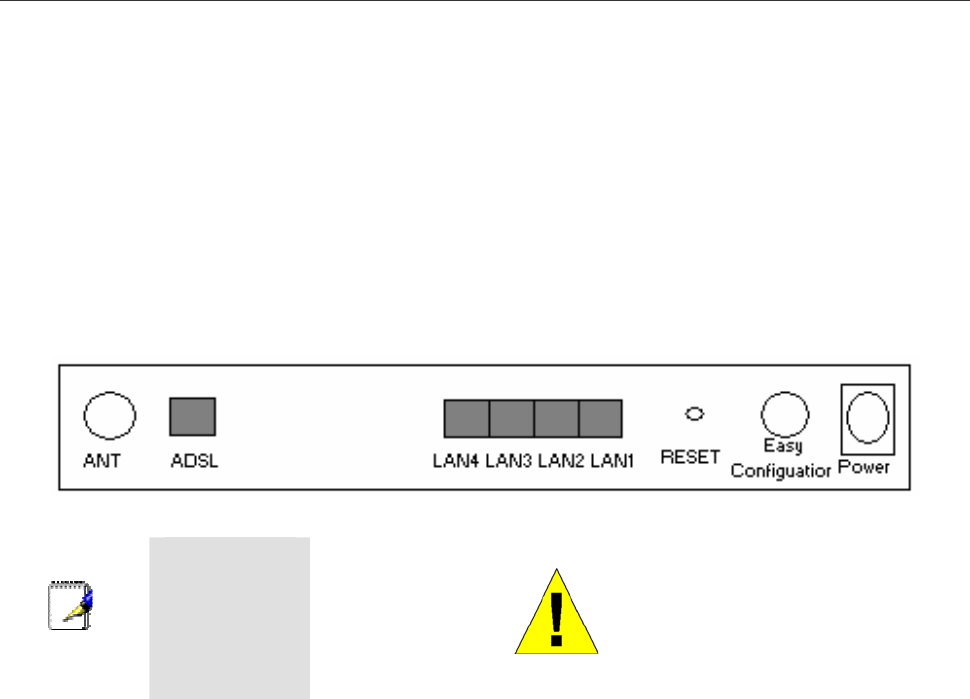
WBMR-G54 Wireless ADSL Router User Guide
Rear Panel Connections
All cable connections to the Router are made at the rear panel. Connect the power adapter here to power on the Router.
Use the Reset button to restore the settings to the factory default values in the next chapter for instructions on using the
reset button).
Connect network cables:
1. Insert the ADSL (telephone) cable included with the Router into the ADSL port and then connect the cable to
your telephone line.
2. Insert one end of the Ethernet cable into one of the LAN ports on the back panel of the Router and the other
end of the cable to an Ethernet Adapter or available Ethernet port on your computer.
Note
To manually
reboot the
Router,
disconnect and
then reconnect
the power.
WARNING!
Using a power supply with a
different voltage rating will
damage the device and void
the warranty of this product.
Setting Up a Wireless Network
In order to get the best performance from the wireless component of the Router, you should have some basic
understanding of how wireless networks operate. Wireless networking is a relatively new technology and there are more
factors to consider when setting up or designing a wireless network than designing a wired network. If you are setting
up a wireless network, especially if you are using multiple access points and/or covering a large area, good planning
from the outset can ensure the best possible reliability, performance, coverage and effective security.
Radio
Wireless local network (as called WI-FI) devices such as notebook computers and wireless access points use
electromagnetic waves within a broad, unlicensed range of the radio spectrum (between 2.4GHz and 2.5GHz) to
transmit and receive radio signals. A wireless access point (AP) becomes a base station for the wireless nodes (notebook
computer for example) in its broadcast range. Often a wireless access point such as the AP embedded in the WBMR-
G54, will also provide a connection to a wired network - usually Ethernet - and ultimately an Internet connection. The
IEEE 802.11 standard precisely defines the encoding techniques used to digitally used for data transmission. The
WBMR-G54 can be used by IEEE 802.11g and 802.11b devices. These two standards are compatible but use different
algorithms for data transmission.
802.11g uses a method called Orthogonal Frequency Division Multiplexing (OFDM) for transmitting data at higher data
rates. OFDM is a more efficient encoding method than Direct Sequence Spread Spectrum (DSSS) transmission, the
method used by 802.11b devices. However, in order to support different data transmission rates while also be
compatible with 802.11b, 802.11g uses a combination of OFDM and DSSS when 802.11b devices are present.
Range
An access point will send and receive signals within a limited range. Also, be aware that the radio signals are emitted in
all directions giving the access point a spherical operating range. The physical environment in which the AP is
5


















